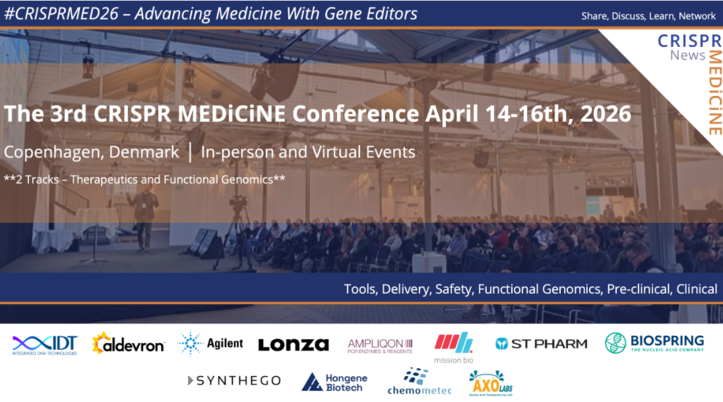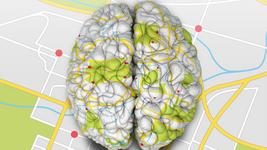Clinical Trial Roundup: Base Editors in the Clinic
VERVE-101: Phase 1 for familial hypercholesterolemia (sponsored by Verve Therapeutics)
Verve Therapeutics is developing VERVE-101 as a single-dose base-editing treatment for heterozygous familial hypercholesterolemia (HeFH).
VERVE-101 is the only in vivo base-editing candidate in the clinic, and it is specifically designed to permanently switch off the PCSK9 gene in the liver, to durably lower disease-driving low-density lipoprotein cholesterol (LDL-C). Elevated LDL-C levels lead to clogged arteries in the heart and are a driver of a number of cardiovascular conditions including HeFH, a prevalent and potentially life-threatening subtype of atherosclerotic cardiovascular disease.
VERVE-101 consists of an adenine base editor (ABE) messenger RNA (licensed from Beam Therapeutics) and an optimised guide RNA (gRNA) targeting the PCSK9 gene, both of which are packaged in an engineered lipid nanoparticle. This cargo is administrered in vivo via blood infusion and it gets taken up by the liver. Once inside the liver, the gRNA and ABE-encoding mRNA are released, leading to translation of the base editor and its migration, along with the gRNA, to the nucleus, followed by disruption of the PCSK9 gene.
By making a single A-to-G change in the DNA genetic sequence of PCSK9, VERVE-101 inactivates the target gene. This has been shown to up-regulate LDL receptor expression, which leads to lower LDL-C levels, thereby reducing the risk for ASCVD.
VERVE-101 is currently being evaluated in the Phase 1 heart-1 clinical trial, which is ongoing in the UK and New Zealand. The trial is designed to evaluate the safety and tolerability of VERVE-101 in individuals with HeFH, with additional analyses for pharmacokinetics and reductions in blood PCSK9 protein and LDL-C. The first patient was dosed in July 2022. CRISPR Medicine News spoke with Verve Therapeutics’ CEO, Sekar Kathiresan, shortly after dosing of the first individual with VERVE-101 last year. He discussed VERVE-101's mechanism of action and how it may transform the lives of individuals with cardiovascular disease. You can read that interview here.
No clinical data has yet been released for VERVE-101, but the company reported in a press release published late last month that it would present interim data from the heart-1 trial at the American Heart Association’s Scientific Sessions 2023, which will be held in Philadelphia from November 11th-13th.
BE CAR-7: Phase 1 for T-cell acute lymphoid leukaemia (sponsored by Great Ormond Street Hospital UK)
Great Ormond Street Hospital (GOSH) for Children NHS Foundation Trust in the UK is sponsoring a Phase 1 trial for BE CAR-7, a base-edited CAR T-cell therapy designed to treat various T cell cancers, including relapsed or refractory T-cell acute lymphoid leukaemia (T-ALL).
The BE CAR-7 trial is currently recruiting for patients in the UK aged between 6 months and 16 years with relapsed/refractory T cell leukaemia ahead of a planned bone marrow transplant. Lymphodepleting chemotherapy will be given to trial participants before dosing with a single infusion of cryopreserved BE CAR-7 cells, to prolong the persistence of the infused cells and thereby increase the effectiveness of the treatment.
BE CAR-7 is designed to be a universal, off-the-shelf CAR T-cell therapy, and it is generated using healthy volunteer donor T cells. These cells are transduced with a lentivirus to express a chimeric antigen receptor (CAR) with specificity for CD7, a protein that is widely expressed in T-ALL. Base editing is then used to inactivate three genes in the therapeutic cells, which encode for the CD52 and CD7 receptors as well as the β chain of the αβ T-cell receptor. These edits allow the BE CAR-7 cells to evade lymphodepleting chemotherapy, prevent CAR7 T-cell fratricide, and mitigate the risk of graft-versus-host disease, respectively.
Last December, news of BE CAR-7 made international headlines when GOSH reported that a 13-year old girl, Alyssa, from Leicester in England became the first reported patient in the world to receive base-edited T-cells. She received the experimental treatment for relapsed T-ALL that had been diagnosed in 2021.
At the time of dosing with BE CAR-7 at GOSH in May 2022, Alyssa had exhauasted all conventional treatment options for her disease, including chemotherapy and bone marrow transplant. GOSH shared in December 2022 that Alyssa's disease had gone into remission within 28 days of her treatment, and following a second bone marrow transplant to replenish her immune system, she continued to do well at home with regular follow ups at GOSH.
Patients taking part in the trial are expected to be hospitalised for 4-6 weeks for the BE CAR-7 treatment and a bone marrow transplant will be scheduled 2-4 weeks after the end of BE CAR7 treatment if leukaemic cells are no longer detectable. Patients will be monitored on the study for 1 year after transplant and then long term in routine clinics.
Last month, details surrounding the design of BE CAR-7 and interim data from the Phase 1 trial were published in an article in the New England Journal of Medicine.
Base editors in brief
Base editing is a gene-editing technology described initially by the laboratories of Drs. David Liu and Akihiko Kondo in 2016.
Base editing combines the powerful DNA-scanning and sequence-identification capabilities of the CRISPR-Cas9 system with a deaminase enzyme, which introduces single nucleotide polymorphisms (SNPs) by chemically altering the target DNA sequence without the intentional generation of a DNA double-strand break (DSB). This chemical modification, known as deamination, consists of the removal of an amino group from a nucleotide, which after DNA repair or replication results in the installation of a new base.
The first base editors developed in 2016, called cytosine base editors (CBEs), can substitute a cytosine base for a thymine (C→T), while newer base editors called adenine base editors (ABEs) are able to introduce adenine-to-guanine (A→G) substitutions (3). More recently, base editors capable of cytosine-to-guanine (CGBEs) or simultaneous adenine and cytosine (ACBEs) substitutions have also been developed but their application is still limited to a handful of studies.
Check out our recent explainer article to learn more about how base editors are engineered, their mode of action, and how they are being applied to develop new therapies. Read the explainer here.
BEAM-101: Phase 1/2 for haemoglobinopathy (sponsored by Beam Therapeutics)
BEAM-101 is the first base-edited therapy candidate to enter the clinic for a haemoglobinopathy. This candidate is as a patient-specific, autologous haematopoietic stem and progenitor cell (HSPC) therapy designed as a one-time treatment for sickle cell disease (SCD) and transfusion-dependent beta thalassemia.
In late 2021, Beam Therapeutics announced that the U.S. FDA had cleared BEAM-101 for clinical evaluation as a treatment for SCD.
To generate BEAM-101, a patient's own HSPCs are engineered ex vivo with an adenine base editor (ABE) that incorporates A → G base edits in the HBG1 and HBG2 gene promoters, which regulate the expression of foetal haemoglobin (HbF). These edits mimic the naturally-occurring HbF-inducing mutations observed in individuals that continue to produce foetal haemoglobin beyond infancy, leading to reactivation of HbF expression to compensate for the lack of adult haemoglobin in SCD. The BEAM-101 base-editing reagents are delivered to patient-derived haemopoetitic stem cells via electroporation.
Results from animal studies reveal high levels of base editing and robust HbF induction after long-term in vivo engraftment with BEAM-101 cells.
According to a company press release published in November 2022, the first patient has been enroled in the BEACON Phase 1/2 clinical trial of BEAM-101. Recruiting is still ongoing for this trial, which aims to assess the efficacy and safety of BEAM-101 in an estimated 15 adult participants.
BEAM-201: Phase 1/2 for T-ALL (sponsored by Beam Therapeutics)
Beam Therapeutics announced in a press release published last month that the first patient had been dosed with the company's second clinical-stage base-editing therapy candidate, BEAM-201. This milestone marked the first individual to be dosed with one of Beam's candidate therapies, and the first patient in the United States to be dosed with a base-editing therapeutic.
BEAM-201 is a quadruplex-edited allogeneic CAR-T cell investigational therapy that is being developed for the treatment of relapsed or refractory T-cell acute lymphoblastic leukaemia/T-cell lymphoblastic lymphoma (T-ALL/T-LL), an aggressive form of blood cancer that originates from transformed T cells, and for which treatment options are very limited. BEAM-201 is an anti-CD7 CAR-T cell therapy candidate, which undergoes multiplex base editing to eliminate expression of the CD7, TRAC, PDCD1 and CD52 genes. Base editor mRNA and 4 single-guide RNAs that each target one of the aforementioned genes are delivered to healthy donor T cells via a single electroporation step, and the edited cells are then infused into patients. Collectively, these edits target the therapeutic cells to cancerous cells, mitigate the risk of graft-vs-host disease, prevent immune evasion by the cancer cells, and prolong the persistance of the therapeutic cells within the patient. You can read a more detailed description of what the individual edits are intended for in our recent clinical trial update here.
BEAM-201 is being evaluated in a Phase 1/2 multicenter, open-label study that aims to enrol 102 eligible adults and children with CD7-positive T-ALL/T-LL. The study consists of Phase 1 dose-exploration cohorts, Phase 1 dose-expansion cohort(s), a Phase 1 paediatric cohort (to enrol patients ages 1 to < 12 years after health authority approval), and a Phase 2 cohort.
We will continue to provide updates on all of these clinical trials as new data emerges.
For a complete overview of current gene editing clinical trials, check out CRISPR Medicine News' Clinical Trials Database.
To get more CRISPR Medicine News delivered to your inbox, sign up to the free weekly CMN Newsletter here.
Tags
ArticleNewsClinical News UpdatesAcute Lymphoblastic Leukemia, ALLBeta ThalassemiaFamilial Hypercholesterolemia, FHSickle Cell Disease, SCDBase editorsBeam Therapeutics Inc.Great Ormond Street Hospital for Children NHS TrustVerve Therapeutics, Inc.
CLINICAL TRIALS
Sponsors:
Suzhou Maximum Bio-tech Co., Ltd.
Sponsors:
Zhejiang University







